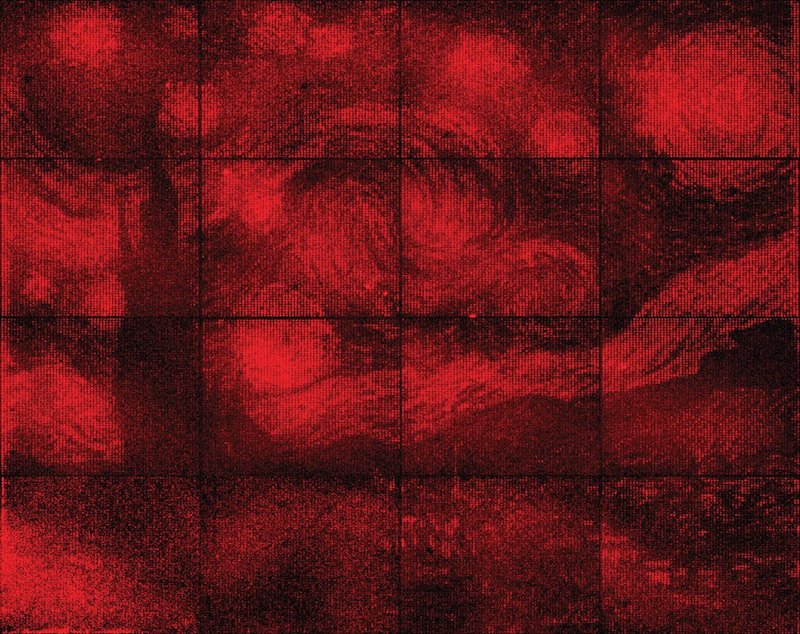
DNA origami of Starry Night
July’s first issue of Caltech Weekly published this image this week, created by Caltech researchers in Pasadena, California, in 2016. It’s an example of DNA origami, the nanoscale folding of DNA to create 2- and 3-dimensional shapes. In this case, the researchers recreated the classic painting Starry Night by Vincent Van Gogh. The image is about the width of a dime across (less than 2 cm).
Here’s an archived paper published in Nature in 2016, describing how they did it.
Paul Rothemund is a research professor in the Computation and Neural Systems Department at Caltech. He pioneered DNA origami in the early 2000s. The process permits long strands of DNA to fold into any shape. These shapes act as a “scaffold” where microscopic components can be arranged and molded. Rothemund explained:
Think of it a bit like the pegboards people use to organize tools in their garages, only in this case, the pegboard assembles itself from DNA strands and the tools likewise find their own positions. It all happens in a test tube without human intervention, which is important because all of the parts are too small to manipulate efficiently, and we want to make billions of devices.
Not just a pretty picture
According to Caltech, the process behind the Van Gogh model has the potential to influence a variety of applications from drug delivery to the construction of nanoscale computers.
And Rothemund’s colleague, Ashwin Gopinath added:
… aside from applications, there’s a lot of fundamental science to be done.
Bottom line: An example of DNA origami, created by researchers at Caltech. It’s one of the world’s smallest reproductions – about the size of a dime – of Vincent van Gogh’s famous painting Starry Night.
The post DNA origami used to recreate Van Gogh’s Starry Night first appeared on EarthSky.
from EarthSky https://ift.tt/36oHaLx

DNA origami of Starry Night
July’s first issue of Caltech Weekly published this image this week, created by Caltech researchers in Pasadena, California, in 2016. It’s an example of DNA origami, the nanoscale folding of DNA to create 2- and 3-dimensional shapes. In this case, the researchers recreated the classic painting Starry Night by Vincent Van Gogh. The image is about the width of a dime across (less than 2 cm).
Here’s an archived paper published in Nature in 2016, describing how they did it.
Paul Rothemund is a research professor in the Computation and Neural Systems Department at Caltech. He pioneered DNA origami in the early 2000s. The process permits long strands of DNA to fold into any shape. These shapes act as a “scaffold” where microscopic components can be arranged and molded. Rothemund explained:
Think of it a bit like the pegboards people use to organize tools in their garages, only in this case, the pegboard assembles itself from DNA strands and the tools likewise find their own positions. It all happens in a test tube without human intervention, which is important because all of the parts are too small to manipulate efficiently, and we want to make billions of devices.
Not just a pretty picture
According to Caltech, the process behind the Van Gogh model has the potential to influence a variety of applications from drug delivery to the construction of nanoscale computers.
And Rothemund’s colleague, Ashwin Gopinath added:
… aside from applications, there’s a lot of fundamental science to be done.
Bottom line: An example of DNA origami, created by researchers at Caltech. It’s one of the world’s smallest reproductions – about the size of a dime – of Vincent van Gogh’s famous painting Starry Night.
The post DNA origami used to recreate Van Gogh’s Starry Night first appeared on EarthSky.
from EarthSky https://ift.tt/36oHaLx

Aucun commentaire:
Enregistrer un commentaire